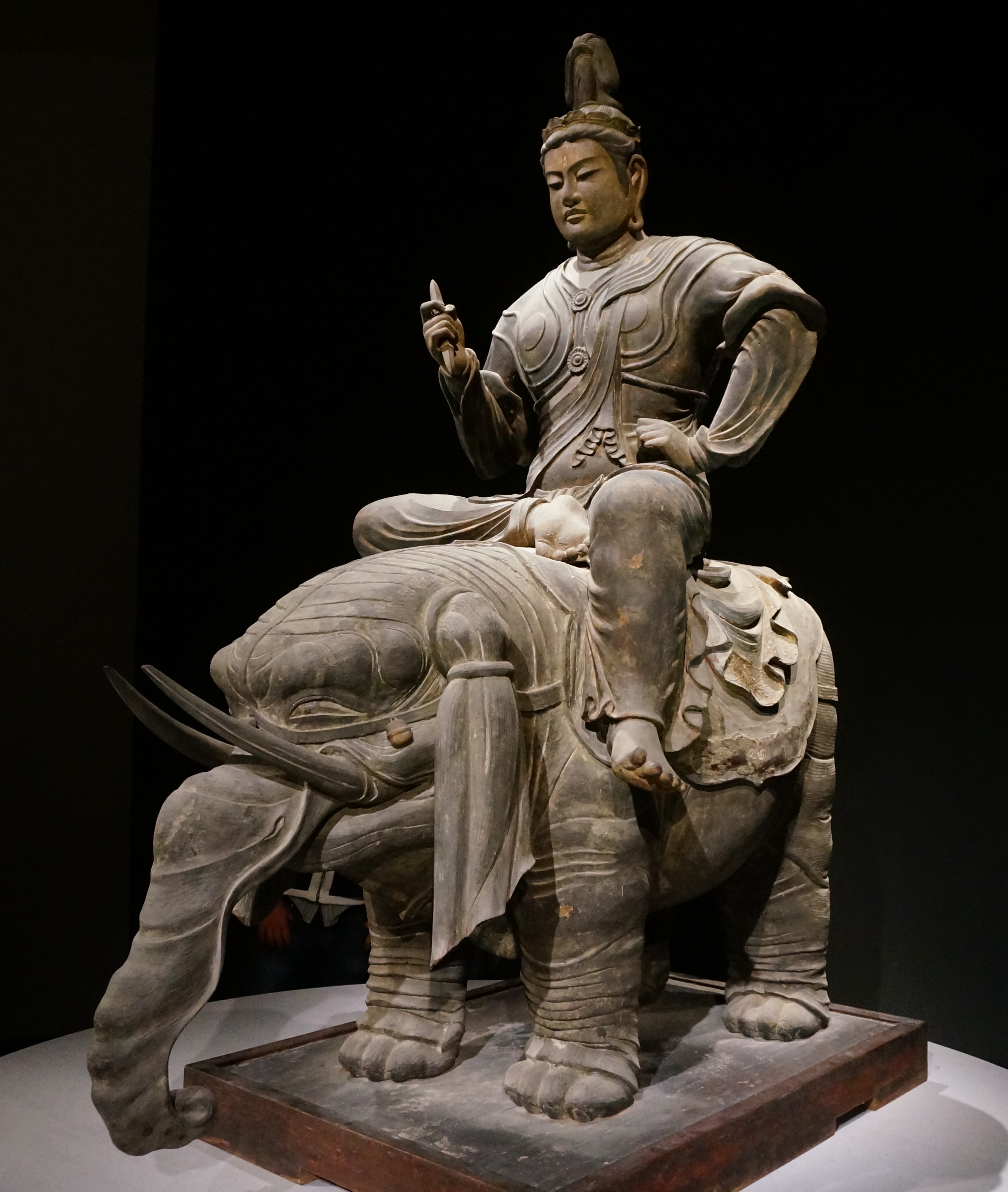|
Abhisamayalankaraloka
''Abhisamayalankaraloka'' is a commentary, by Haribhadra, on the Aṣṭasāhasrikā Prajñāpāramitā Sūtra. This text is one of the most studied in Tibetan monasteries. At present, there are still commentaries on this "commentary" being written and studied. Around the 10th or 11th century, it was translated into Tibetan Tibetan may mean: * of, from, or related to Tibet * Tibetan people, an ethnic group * Tibetan language: ** Classical Tibetan, the classical language used also as a contemporary written standard ** Standard Tibetan, the most widely used spoken dial .... The Abhisamayalankaraloka was first edited by Giuseppe Tucci, in Gaekwad's Oriental Series, No. 62, 1932. Later, Unrai Wogihara edited it with the text of the Aṣṭasāhasrikā Prajñāpāramitā Sūtra(1932, 1935). References Buddhist commentaries {{buddhist-text-stub ... [...More Info...] [...Related Items...] OR: [Wikipedia] [Google] [Baidu] |
Sanskrit
Sanskrit (; attributively , ; nominalization, nominally , , ) is a classical language belonging to the Indo-Aryan languages, Indo-Aryan branch of the Indo-European languages. It arose in South Asia after its predecessor languages had Trans-cultural diffusion, diffused there from the northwest in the late Bronze Age#South Asia, Bronze Age. Sanskrit is the sacred language of Hinduism, the language of classical Hindu philosophy, and of historical texts of Buddhism and Jainism. It was a lingua franca, link language in ancient and medieval South Asia, and upon transmission of Hindu and Buddhist culture to Southeast Asia, East Asia and Central Asia in the early medieval era, it became a language of religion and high culture, and of the political elites in some of these regions. As a result, Sanskrit had a lasting impact on the languages of South Asia, Southeast Asia and East Asia, especially in their formal and learned vocabularies. Sanskrit generally connotes several Indo-Aryan lang ... [...More Info...] [...Related Items...] OR: [Wikipedia] [Google] [Baidu] |
Standard Tibetan
Lhasa Tibetan (), or Standard Tibetan, is the Tibetan dialect spoken by educated people of Lhasa, the capital of the Tibetan Autonomous Region of China. It is an official language of the Tibet Autonomous Region. In the traditional "three-branched" classification of Tibetic languages, the Lhasa dialect belongs to the Central Tibetan branch (the other two being Khams Tibetan and Amdo Tibetan). In terms of mutual intelligibility, speakers of Khams Tibetan are able to communicate at a basic level with Lhasa Tibetan, while Amdo speakers cannot. Both Lhasa Tibetan and Khams Tibetan evolved to become tonal and do not preserve the word-initial consonant clusters, which makes them very far from Classical Tibetan, especially when compared to the more conservative Amdo Tibetan. Registers Like many languages, Lhasa Tibetan has a variety of language registers: * ( Wylie: , literally " demotic language"): the vernacular speech. * ( Wylie: , " honorifics or deference, courtesy"): th ... [...More Info...] [...Related Items...] OR: [Wikipedia] [Google] [Baidu] |
Haribhadra
Aacharya Haribhadra Suri was a Svetambara mendicant Jain leader, philosopher , doxographer, and author. There are multiple contradictory dates assigned to his birth. According to tradition, he lived c. 459–529 CE. However, in 1919, a Jain monk named Jinvijay pointed out that given his familiarity with Dharmakirti, a more likely choice would be sometime after 650. In his writings, Haribhadra identifies himself as a student of Jinabhadra and Jinadatta of the Vidyadhara Kula. There are several, somewhat contradictory, accounts of his life. He wrote several books on Yoga, such as the Yogadṛṣṭisamuccaya and on comparative religion, outlining and analyzing the theories of Hindus, Buddhists and Jains. Life story The earliest story of his life say that Haribhadra was born in Dharmapuri and that he was an educated Brahmin who decided that he would become a pupil of anyone who could state a sentence which Haribhadra could not understand. After hearing a Jain nun named Yāk ... [...More Info...] [...Related Items...] OR: [Wikipedia] [Google] [Baidu] |
Haribhadra (Seng-ge Bzang-po)
Haribhadra, also known as Shizi Xian () or Sengge Zangpo (; both names mean "righteous lion") was an 8th-century CE Buddhist philosopher, and a disciple of Śāntarakṣita, an early Indian Buddhist missionary to Tibet. He was one of the founding monks of the Vikramashila monastery. Haribhadra's commentary on the ''Abhisamayalankara'' was one of the most influential of the twenty-one Indian commentaries on that text, perhaps because of its author's status as Shantarakshita's student. Like his master, Haribhadra is retrospectively considered by Tibetan doxographical tradition to represent the Yogācāra-Svatantrika-Mādhyamaka school. Haribhadra's interpretation of the ''Abhisamayalankara'', particularly his four-kaya model, was controversial and contradicted the earlier normative interpretation popularized by Vimuktasena. Haribhadra claims, that Abhisamayalamkara chapter 8 is describing Buddhahood through four kayas: svabhavikakaya, nanaharmakaya, sambhogakaya and nirmanakaya. ... [...More Info...] [...Related Items...] OR: [Wikipedia] [Google] [Baidu] |
Aṣṭasāhasrikā Prajñāpāramitā Sūtra
The ''Aṣṭasāhasrikā Prajñāpāramitā Sūtra'' (Sanskrit: अष्टसाहस्रिका प्रज्ञापारमिता सूत्र; English: ''The Perfection of Wisdom in Eight Thousand ines') is a Mahāyāna Buddhist sūtra in the category of Prajñāpāramitā sūtra literature. The sūtra's manuscript witnesses date to at least ca. 50 CE, making it among the oldest Buddhist manuscripts in existence.{https://blogs.loc.gov/international-collections/2019/07/2000-year-old-buddhist-scroll-from-ancient-gandhara-digitized-by-library-of-congress/ Library of Congress blog post] The sūtra forms the basis for the expansion and development of the Prajñāpāramitā sūtra literature. In terms of its influence in the development of Buddhist philosophy, Buddhist philosophical thought, P.L. Vaidya writes that "all Buddhist writers from Nāgārjuna, Āryadeva, Maitreyanātha, Asaṅga, Vasubandhu, Dignāga, down to Haribhadra concentrated their energies i ... [...More Info...] [...Related Items...] OR: [Wikipedia] [Google] [Baidu] |
Tibetan Monasteries
This is the list of Tibetan monasteries of Tibetan Buddhism. Gallery File:A grand view of Samye.jpg, Samye Monastery in Dranang File:Ganden monastery.jpg, Ganden Monastery in Lhasa with some ruins visible from destruction by the Communist Chinese after 1959 flight of the 14th Dalai Lama to exile in India. File:Sera Monastery5.jpg, Sera Monastery in Lhasa File:Drepung monastery.jpg, Drepung Monastery in Lhasa File:Tashilhunpo.JPG, Tashilhunpo in Shigatse References External links Monastery List for Tibet Mapping Buddhist Monasteries Wiki {{DEFAULTSORT:Tibetan monasteries Tibetan architecture * Buddhist monasteries Buddhism ( , ), also known as Buddha Dharma and Dharmavinaya (), is an Indian religion or philosophical tradition based on teachings attributed to the Buddha. It originated in northern India as a -movement in the 5th century BCE, and gra ... Lists of Buddhist monasteries ... [...More Info...] [...Related Items...] OR: [Wikipedia] [Google] [Baidu] |
Old Tibetan
Old Tibetan refers to the period of Tibetan language reflected in documents from the adoption of writing by the Tibetan Empire in the mid-7th century to works of the early 11th century. In 816 CE, during the reign of Sadnalegs, literary Tibetan underwent a thorough reform aimed at standardizing the language and vocabulary of the translations being made from Indian texts, and this resulted in what we now call Classical Tibetan. Phonology Old Tibetan is characterised by many features that are lost in Classical Tibetan, including ''my-'' rather than ''m-'' before the vowels ''-i-'' and ''-e-'', the cluster ''sts-'' which simplifies to ''s-'' in Classical Tibetan, and a reverse form of the "i" vowel letter (''gi-gu''). Aspiration was not phonemic and many words were written indiscriminately with consonants from the aspirated or unaspirated series. Most consonants could be palatalized, and the palatal series from the Tibetan script represents palatalized coronals. The sound conventi ... [...More Info...] [...Related Items...] OR: [Wikipedia] [Google] [Baidu] |
Giuseppe Tucci
Giuseppe Tucci (; 5 June 1894 – 5 April 1984) was an Italian orientalist, Indologist and scholar of East Asian studies, specializing in Tibetan culture and the history of Buddhism. During its zenith, Tucci was a supporter of Italian fascism, and he used idealized portrayals of Asian traditions to support Italian ideological campaigns. Tucci was fluent in several European languages, Sanskrit, Bengali, Pali, Prakrit, Chinese and Tibetan and he taught at the University of Rome La Sapienza until his death. He is considered one of the founders of the field of Buddhist Studies. Life and work Education and background He was born to a middle-class Italian family (from Apulia) in Macerata, Marche, and thrived academically. He taught himself Hebrew, Chinese and Sanskrit before even going to university and in 1911, aged only 18, he published a collection of Latin inscriptions in the prestigious '' Zeitschrift des Deutschen Archäologischen Instituts''. He completed his studies a ... [...More Info...] [...Related Items...] OR: [Wikipedia] [Google] [Baidu] |



